Philosopher’s Path, or Tetsugaku no Michi in Japanese, is not only a popular sightseeing spot in Kyoto,japan. Many locals also like to visit this picturesque road if they want to take a peaceful walk surrounded by nature. This walkway in the Higashiyama area is around 1.5 km long, and it stretches along the canal of Biwako-sosui that dates back to 1890.
It has become a very popular spot in Kyoto because of the quiet atmosphere and beautiful trees surrounded that make the path very colorful in spring and autumn. The Philosopher’s Path is designated as one of the top 100 most beautiful streets in Japan.
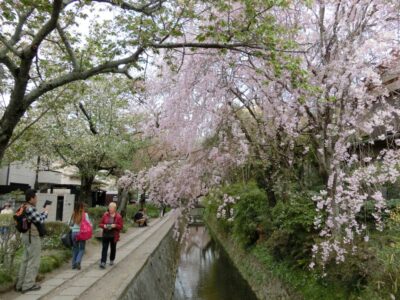
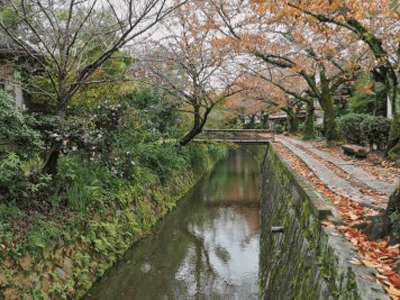
History of the Canal
The canal water comes from Lake Biwa in Shiga Prefecture. Lake Biwa is the biggest lake in Japan with a surface of 670 km2. The first canal was constructed in 1890, then the second construction was done in 1920. Kyoto used to be the capital of Japan where the Emperor lived for more than 1,000 years, but Emperor Meiji moved to Tokyo after the Meiji Restoration in 1868. This made the governor of Kyoto feel a sense of crisis because the city might lose its prosperity by losing the title of ‘capital city’.
This is why he made a policy to industrialize Kyoto. The governor ordered the construction of the canal because he thought that water would be essential to develop new industries. He turned out to be right, and his quest to industrialize Kyoto was successful. Water power plants, the first tram in Japan, the water transportation system, and many other industries have developed in Kyoto ever since.
The Origin of the Name “Philosopher’s Path”
The apt name of this street came from the famous philosopher Kitaro Nishida (1870-1945). He was a Philosophy professor at Kyoto University and used to live in this area. He often walked along the canal while thinking deeply, as he felt that the tranquil environment made that very easy. One of his famous sayings is “Live and let live, I go my own way”. You can find a stone monument on the path with this saying engraved. Then local people made an effort to preserve this nice walkway and chose the name Philosopher’s Path.
Location
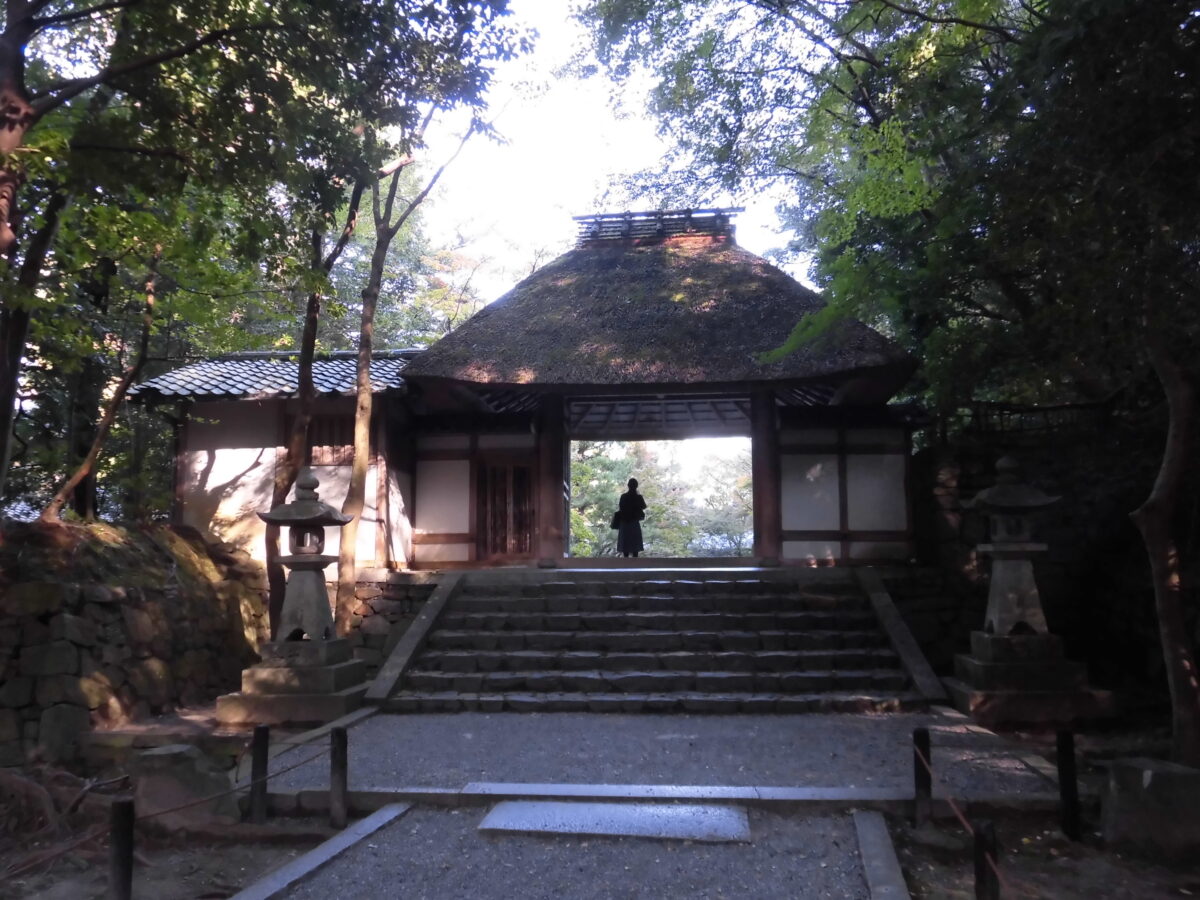
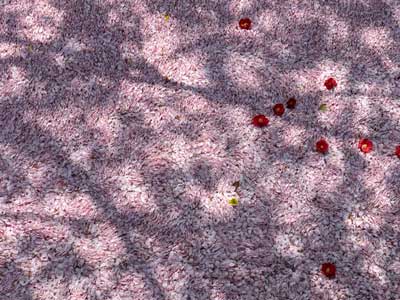
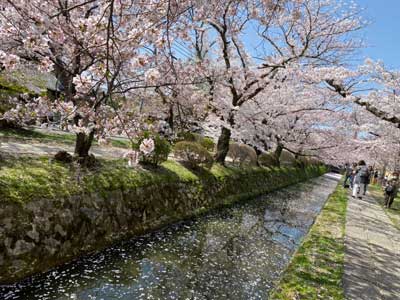
The Philosopher’s Path is located in the Higashiyama area. If you start walking from the north, there is a famous Buddhist temple, Ginkakuji, also known as the Silver Pavilion. There is also the entrance to Mt. Daimonji (465 meters high) which will be lit up during the summer fire festival. The view of Japan’s old capital from the fireplace is amazing.
You will find several temples and shrines while walking the path. You can visit these places for a quiet atmosphere, these temples and shrines are a lot less crowded than Kyoto’s most famous highlights and give a different type of enjoyment. For example, Honenin Temple is very beautiful with its old gate covered with moss. Anrakuji Temple has a coffee shop on its precinct. You can have a quiet relaxing time while enjoying your coffee.
There are a lot of small fancy souvenir shops, coffee shops, and restaurants along the canal. Near the southern end, there is a Japanese tea house owned by a sweets company called Kanou Shoujuan. You can experience a Ryurei style tea ceremony for which they prepare a table and chair, so you don’t need to sit on your heels on the tatami (straw mat) floor if you would prefer that. You can buy their delicious sweets, too.
At the southern end of the path, there is a Shinto shrine, Kumano-Nyakuoji. If you walk further down south, you will find famous temples such as Eikando and Nanzenji. Eikando (the actual name is Zenrinji Temple) is famous for the autumn leaves. Nanzenji is a Zen Buddhist temple famous for its dry landscape garden. In a dry landscape garden, the architect expressed water with the pattern of the gravel without using actual water.
Seasonal Changes
The beautiful seasonal changes of the cherry blossoms in spring, lush green leaves in summer, colorful maple leaves in autumn, and the quiet but energizing air of winter make this a great spot to enjoy the 4 seasons in Kyoto. This path is one of the top cherry blossom viewing spots in Kyoto. There are 300 cherry trees along the canal which was donated by the Japanese painter Kansetsu Hashimoto (1883-1945) in 1922. He had his workshop nearby which was turned into a restaurant and a museum called Hakusa-Sonso. The place also has a beautiful Japanese garden. If you visit the museum or have lunch or dinner there, you can enjoy walking in the garden.
The path is beautiful with green leaves in summer. Then the maple leaves and cherry leaves turn yellow and red in autumn. Not many colors in winter, but it is the quietest season. You can walk and do some philosophical thinking without other tourists. As the path is only 1.5 km long, if you just walk through, it will take only about 30 minutes to go from start to finish. But if you walk slowly while appreciating the trees and flowers, visit some temples, shrines, souvenir shops, and a coffee shop along the way, you can easily spend half a day here.
Your Japan Tour
As seasoned Japan experts, we can help you create your perfect Japan tour including guides who can tell you all about the sites around the Philosopher’s Path. The guide can, of course, explain all the other attractive places in beautiful Kyoto. Contact us to start planning your unforgettable holiday to this fascinating country. Japan is full of once-in-a-lifetime experiences, culture, history, nature, and delicious food!
Philosopher’s Path Information
Access :
North end: From Kyoto Station, take a local bus to Ginkakuji-Michi bus stop and walk 5 minutes.
South end: From Kyoto Station, take a local bus to Miyanomae-cho bus stop and walk 5 minutes.
Entrance: You can walk freely on the path along the canal. You need to pay an entrance fee for some of the temples.
Hours :
There are not many street lights along the canal, so please be careful if you walk in the evening.